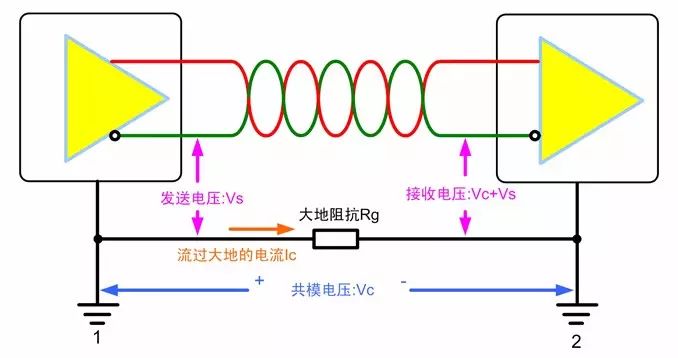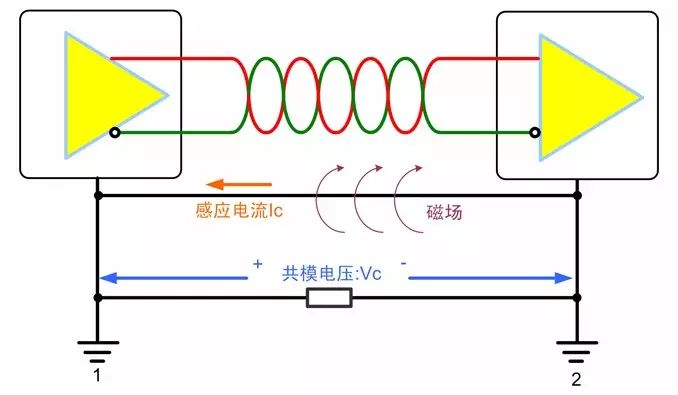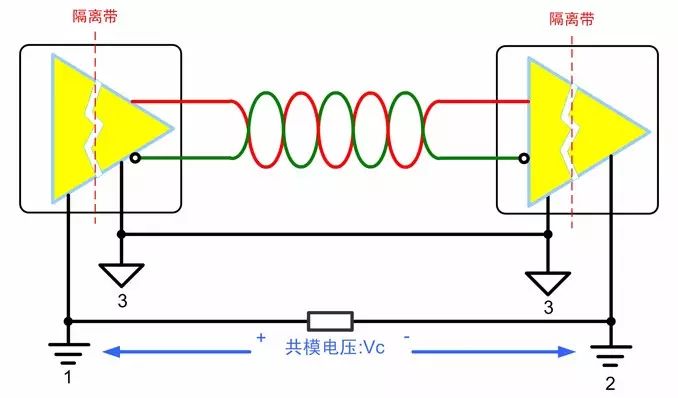
 Summary
Summary
Have you encountered occasional communication errors while debugging with the CAN or RS-485 bus? Or have you been unable to receive data? Did a bus that had been functioning normally suddenly experience widespread errors or node failures? If you are at a loss for these issues, using bus isolation might easily help you resolve them.
In practical bus applications, have you encountered the following problems:
1. Equipment and Personnel Safety – Potential High Voltage Hazards
The operating environment for CAN and RS-485 buses is very complex, with some harsh conditions posing high voltage risks. This can easily lead to electric shock hazards, endangering both personnel and equipment.
2. Data Not Received from Remote Ends – Ground Potential Differences Exist
In many practical applications, communication distances can reach several kilometers, with nodes located far apart. Designers often directly connect each node’s reference ground to the local earth as the return ground for signals, which seems like a normal and reliable practice but carries significant risks! Even systems that are functioning normally during debugging may encounter various problems after a period of use.
A commonly overlooked issue is that there may also be a significant potential difference between the grounds of two nodes!!! The actual earth is not an ideal “0” potential; the earth is also a conductor and has impedance. When large currents flow through the earth, a potential difference will exist at both ends of the current-carrying earth. As shown in Figure 1.

If the communication nodes that are far apart are directly connected to their respective local earths, the ground potential difference will superimpose as common-mode voltage at the output of the bus transmitter. The superimposed signal may far exceed the common-mode input voltage range that the receiver can tolerate, resulting in the inability to receive signals normally, and in severe cases, damaging the transceiver. Ordinary CAN and RS-485 transceivers have a small common-mode input range; for example, the SN65HVD251 and SP3085 transceivers only support a common-mode input range of -7 to +12V. The large currents flowing through the earth from various large devices can cause ground potential differences of several volts, dozens of volts, or even hundreds of volts, far exceeding the voltage range that the transceivers can withstand.
3. Unpredictable Data Errors or Device Damage – Ground Loop Effects
Since there is a potential difference in the ground between nodes, wouldn’t simply connecting the ground of the two nodes with a wire solve the problem? Absolutely wrong! Doing so would only exacerbate the situation, as this long wire would form a massive ground loop with the earth!
As you may have learned in school, a closed loop in a changing magnetic field generates current. 50Hz AC power lines, large motors, etc., are sources of alternating magnetic fields. If the bus is near or passes through these areas, the ground loop can generate currents of several amperes or even hundreds of amperes. The common-mode voltage generated by the current flowing through the ground loop will affect normal communication on the bus.
In addition to stable magnetic field sources, surges from power lines, lightning strikes, and high-frequency noise can also be instantaneously picked up by this giant “loop antenna,” causing communication anomalies.

What to Do?
Replace your current CAN and RS-485 transceivers with isolated CAN and RS-485 transceivers!
Isolated transceivers can electrically isolate the bus from the control circuit, blocking high voltages outside the control system, effectively ensuring the safety of operators and the system. Moreover, isolation can suppress various common-mode interferences caused by ground potential differences and ground loops, ensuring uninterrupted and error-free operation of the bus even in the presence of severe interference and other system-level noise. As shown in Figure 3, using isolated transceivers can effectively prevent the formation of ground loops, allowing the bus reference ground to fluctuate with common-mode voltage fluctuations, with all common-mode voltage being borne by the isolation, making it invisible to the bus signals, thus ensuring stable and reliable communication on the bus.

Guangzhou Zhiyuan Electronics provides you with high-quality and reliable isolated CAN and RS-485 transceivers, with complete isolation of power and signals, and isolation withstand voltage of up to 2500VDC and above, ensuring the safety of your CAN and RS-485 bus!
Click “Read the Original” to learn more about isolated transceivers; there is bound to be one suitable for your application!
Contact Information
-
Sales Phone: 400-888-4005 press 1
-
Technical Support Phone: 400-888-4005 press 2
Zhiyuan Electronics (ID: ZLG_zhiyuan )
Haven’t followed Zhiyuan Electronics yet? You will miss out on daily practical tips! You will miss a history that overturns foreign brands!! Sometimes you want to prove something to ten thousand people, but in the end, you find that you only got one understanding person, and that’s enough. Are you the congee powder we’ve been waiting for? Our WeChat ID: ZLG_zhiyuan.
